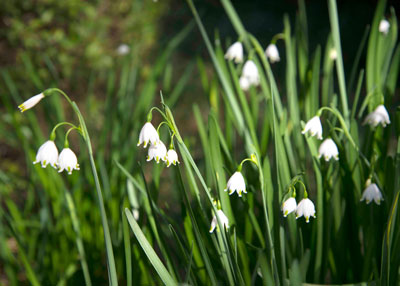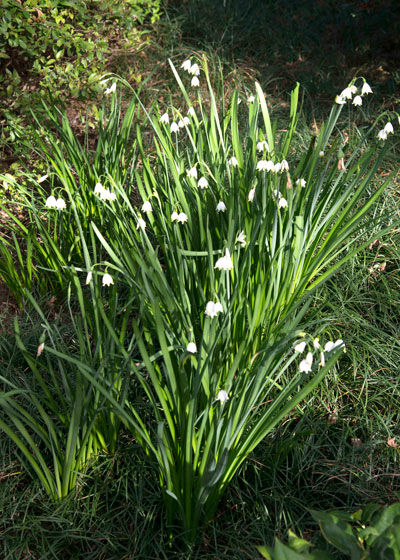Plant of the Week: Summer Snowflake
I wear brown shoes and khaki slacks. I listen to Baroque music quietly. I married a wonderful Ohio farm girl. I’m a very simple guy, and I love uncomplicated things.
That’s why summer snowflake, Leucojum aestivum ‘Gravetye Giant,’ is one of my all-time favorite spring-blooming bulbs. It’s refined and understated. It’s dependable. It cheers up my days for the two weeks that it blooms every spring.
Begging forgiveness of the South Texas gardeners whose summer snowflakes wrapped up their bloom times a week or two ago, ours in North Texas are at their prime right now.

Photo:This clump of summer snowflakes in the Sperry garden has been getting larger and stronger with each passing year.
Growing Summer Snowflakes
Few plants are any easier to grow. The bulbs are comparatively large. Buy them in October when supplies first arrive, and plant them in masses or drifts of 15 or 25 bulbs.
Plant the bulbs 5 or 6 inches apart and 3 inches deep, and be sure they’re in places where they won’t be disturbed once their foliage dies to the ground later in the season.

Photo: Summer snowflake planting has been in Sperry landscape for more than 10 years. Photo taken yesterday in peak bloom.
Summer snowflakes work best in clusters, not in straight rows. The daffodil-like foliage grows robustly to 15 to 18 inches tall, so in spite of the flowers’ tiny size, don’t plant them at the front of the floral border. They do best with moist soils and in shaded settings.
There just isn’t much more to say about the care of summer snowflakes. Don’t trim the leaves until after they turn yellow and brown. Don’t worry about special fertilizers for them. No pests seem to bother them, and they’re listed as resistant to deer. If you dig them to transplant or share, early September is the best time to do so.
That’s all I need to say. They seem to get along just fine in this world. We should be so lucky that our other plants would be half as easy.
Otherwise, just sit back and enjoy their sweet show.
